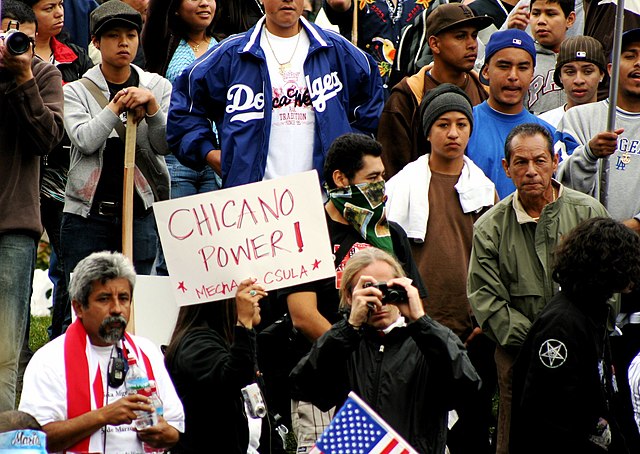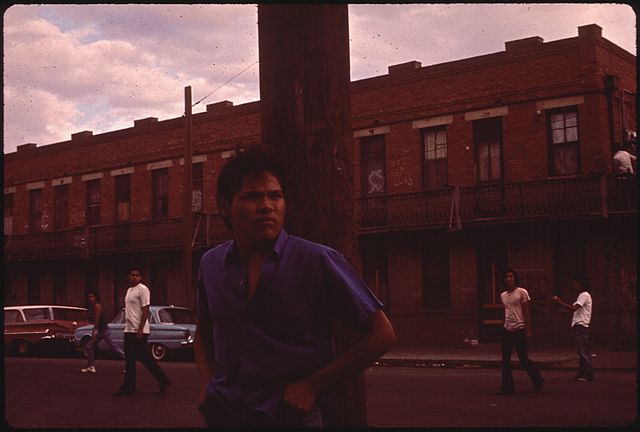The Chicano Movement, also referred to as El Movimiento, was a social and political movement in the United States that worked to embrace a Chicano/a identity and worldview that combated structural racism, encouraged cultural revitalization, and achieved community empowerment by rejecting assimilation. Chicanos also expressed solidarity and defined their culture through the development of Chicano art during El Movimiento, and stood firm in preserving their religion.
Cesar Chavez with demonstrators
The Farm Labor Organizing Committee (FLOC)
Members of MEChA protesting for free college tuition at the Colegio César Chávez in Mt. Angel, Oregon.
Detail of the "Los Seis de Boulder" memorial sculpture on the University of Colorado Boulder campus
Chicano or Chicana is an ethnic identity for Mexican Americans who have a non-Anglo self-image, embracing their Mexican Native ancestry. Chicano was originally a classist and racist slur used toward low-income Mexicans that was reclaimed in the 1940s among youth who belonged to the Pachuco and Pachuca subculture. In the 1960s, Chicano was widely reclaimed in the building of a movement toward political empowerment, ethnic solidarity, and pride in being of indigenous descent. Chicano developed its own meaning separate from Mexican American identity. Youth in barrios rejected cultural assimilation into the mainstream American culture and embraced their own identity and worldview as a form of empowerment and resistance. The community forged an independent political and cultural movement, sometimes working alongside the Black power movement.
A "Chicano Power!" by M.E.Ch.A. CSULA is held up in a crowd (2006).
El Paso's Second Ward, a Chicano neighborhood (1972)
"Chicana by luck, proud by choice" at 2019 Women's March, Los Angeles
Chicano may derive from the Mexica people, originally pronounced Meh-Shee-Ka.








